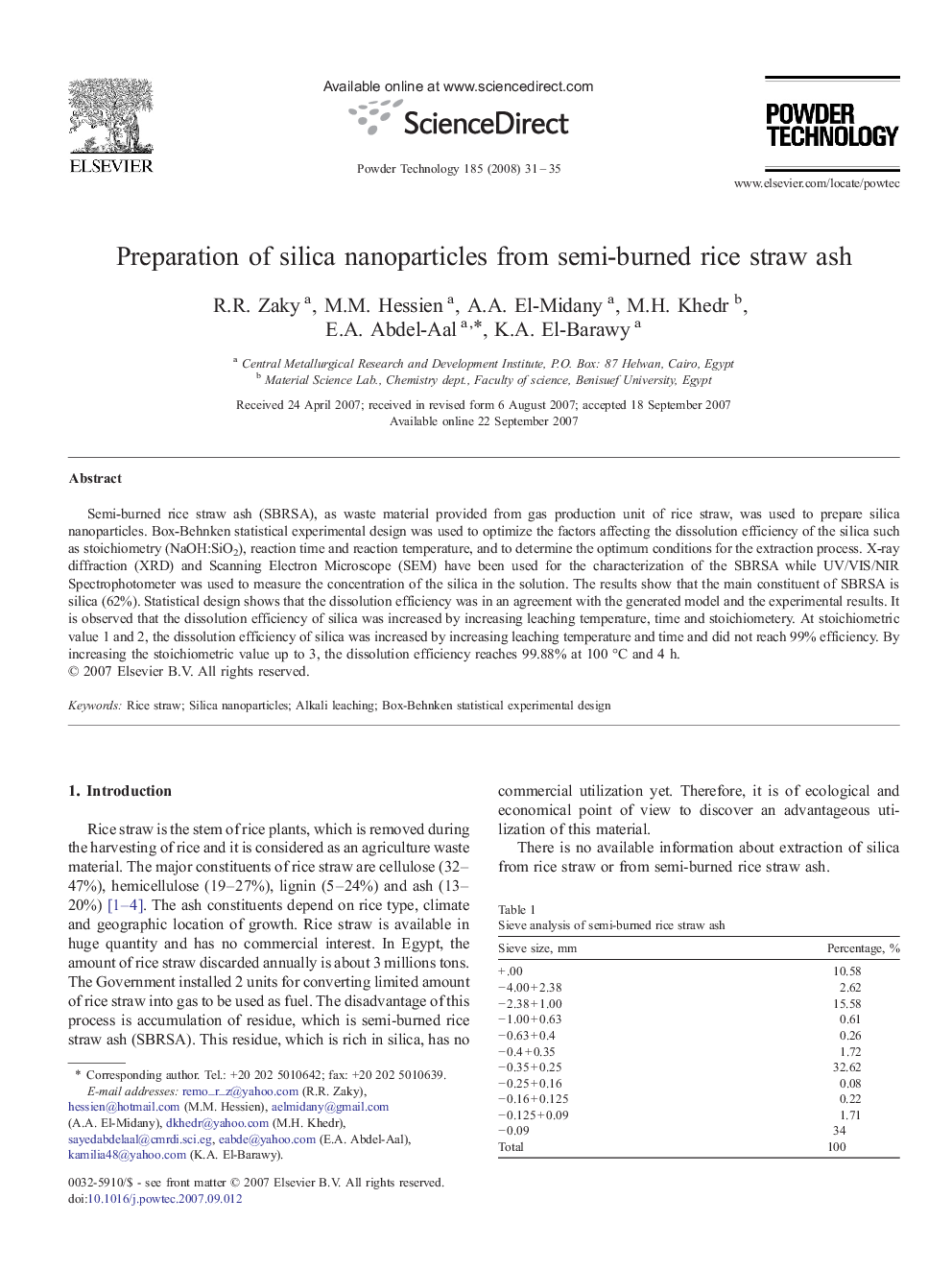| Article ID | Journal | Published Year | Pages | File Type |
|---|---|---|---|---|
| 238929 | Powder Technology | 2008 | 5 Pages |
Semi-burned rice straw ash (SBRSA), as waste material provided from gas production unit of rice straw, was used to prepare silica nanoparticles. Box-Behnken statistical experimental design was used to optimize the factors affecting the dissolution efficiency of the silica such as stoichiometry (NaOH:SiO2), reaction time and reaction temperature, and to determine the optimum conditions for the extraction process. X-ray diffraction (XRD) and Scanning Electron Microscope (SEM) have been used for the characterization of the SBRSA while UV/VIS/NIR Spectrophotometer was used to measure the concentration of the silica in the solution. The results show that the main constituent of SBRSA is silica (62%). Statistical design shows that the dissolution efficiency was in an agreement with the generated model and the experimental results. It is observed that the dissolution efficiency of silica was increased by increasing leaching temperature, time and stoichiometery. At stoichiometric value 1 and 2, the dissolution efficiency of silica was increased by increasing leaching temperature and time and did not reach 99% efficiency. By increasing the stoichiometric value up to 3, the dissolution efficiency reaches 99.88% at 100 °C and 4 h.
Graphical abstractSemi-burned rice straw ash (SBRSA) was used to prepare silica nanoparticles. Box-Behnken statistical experimental design was used to optimize the factors affecting the dissolution efficiency of the silica from the ash. The main constituent of SBRSA is silica (62%). At NaOH:SiO2 stoichiometric value of 1 and 2, the obtained dissolution efficiency was < 99% and decrease with decreasing leaching temperature and time. By increasing the stoichiometric value up to 3, the dissolution efficiency reaches 99.88% at 100 °C and 4 h.Figure optionsDownload full-size imageDownload as PowerPoint slideTEM image of silica nanoparticles prepared from semi-burned rice straw ash
